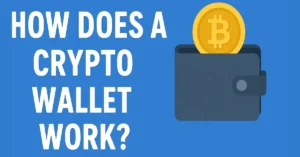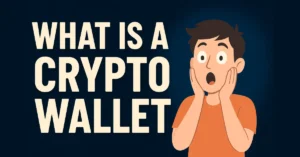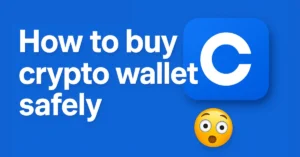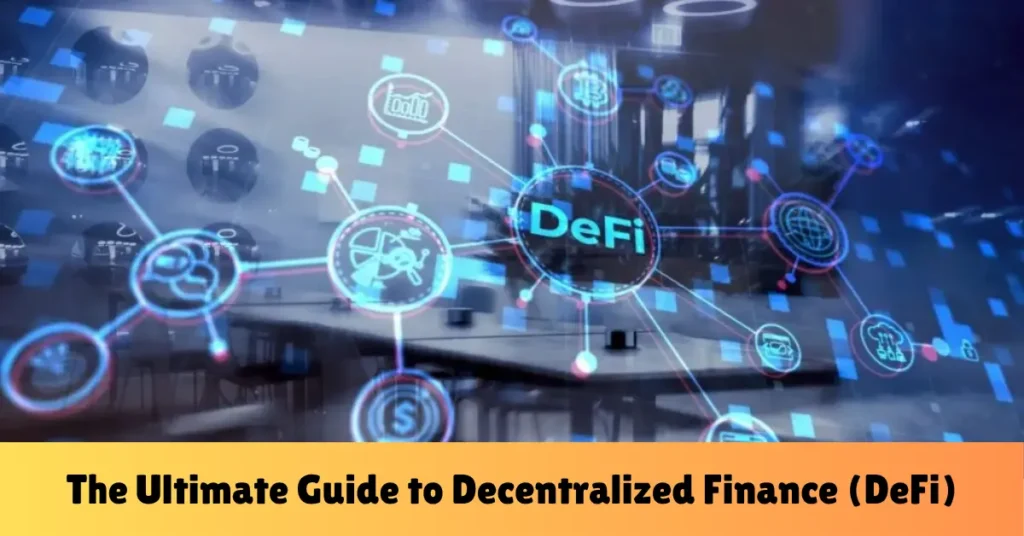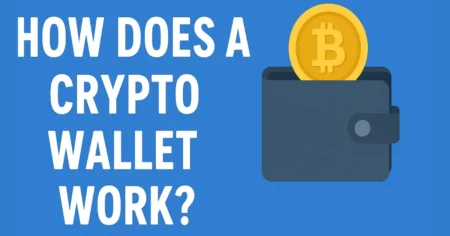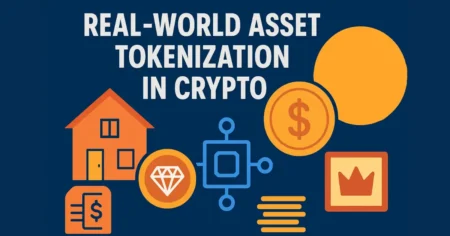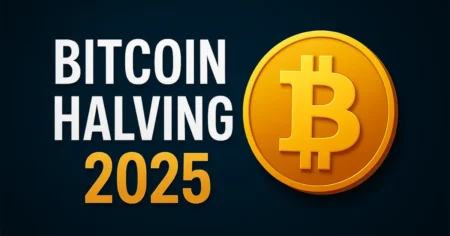Introduction to Decentralized Finance
Decentralized Finance, or DeFi, is more than just a buzzword in the cryptocurrency space—it’s a financial revolution reshaping how we think about money, banking, and investments. At its core, DeFi removes the middleman from financial transactions. Instead of relying on banks, brokers, or payment processors, it uses blockchain technology to allow people to transact directly with each other.
The rise of DeFi represents a shift toward greater financial freedom. Traditional financial systems have been around for centuries, but they’re often slow, costly, and exclusive. DeFi offers an alternative—one that’s faster, more accessible, and potentially more profitable. It enables anyone with an internet connection to borrow, lend, trade, and invest without going through lengthy approval processes.
This transformation didn’t happen overnight. It’s the result of years of blockchain development, the growth of cryptocurrencies like Bitcoin and Ethereum, and the introduction of smart contracts. Together, these innovations have created a thriving digital ecosystem where money moves without central authority oversight.
What is DeFi?
DeFi stands for “Decentralized Finance,” a term used to describe a collection of financial services built on public blockchains, primarily Ethereum. These services mimic traditional banking functions—like lending, borrowing, and trading—but without centralized control.
In a DeFi network, transactions are executed automatically through smart contracts—self-executing code that enforces rules and agreements. This means there’s no need for human intermediaries, and the system can operate 24/7 without downtime.
For example, if you want to earn interest on your crypto holdings, you can deposit them into a DeFi lending platform like Aave or Compound. The platform matches you with borrowers automatically, sets the interest rate based on supply and demand, and ensures repayment—all without you ever speaking to a bank representative.
How DeFi Differs from Traditional Finance
The main difference between DeFi and traditional finance lies in control and accessibility. Traditional finance relies on centralized institutions—banks, credit unions, insurance companies—that maintain control over their services. They decide who can participate, set interest rates, and enforce regulations.
DeFi, on the other hand, operates on open networks where anyone can participate without asking permission. You don’t need to prove your credit score, provide a stack of documents, or live in a certain country. All you need is a cryptocurrency wallet and internet access.
Another big difference is transparency. In traditional banking, customers have little insight into how their money is handled. With DeFi, every transaction is recorded on a blockchain, meaning it’s public, verifiable, and nearly impossible to alter.
Why DeFi is Gaining Popularity
There are several reasons why DeFi is attracting attention:
- High Returns – Many DeFi platforms offer significantly higher interest rates compared to traditional banks.
- Financial Freedom – Users have full control of their funds without relying on centralized entities.
- Borderless Access – DeFi is available globally, without the need for physical infrastructure.
- Innovation – New financial products and services emerge rapidly in the DeFi space.
It’s no surprise that billions of dollars in value are now “locked” into DeFi protocols. As more people become frustrated with high banking fees, slow transfers, and limited access to investment opportunities, DeFi stands out as a compelling alternative.
Core Principles of DeFi
While the technology behind DeFi can get complex, its principles are surprisingly straightforward. These principles set the tone for how DeFi platforms operate and why they’re so different from traditional systems.
Decentralization and Blockchain Technology
Decentralization means that no single entity controls the network. Instead, transactions are verified and recorded by multiple participants (nodes) spread across the globe. This is possible thanks to blockchain technology, which acts as a public, secure ledger.
Because DeFi applications run on decentralized blockchains like Ethereum, they’re resistant to censorship, downtime, and fraud. Even if one part of the network goes offline, the system as a whole remains operational.
Transparency and Open Access
One of DeFi’s most powerful aspects is transparency. Every transaction, contract, and balance is visible on the blockchain. This prevents shady practices and increases trust between users who may not know each other personally.
Additionally, DeFi systems are open-source, meaning their code is available for anyone to inspect. This allows developers to identify vulnerabilities and improve the system—something traditional banks rarely allow.
Permissionless and Trustless Systems
In DeFi, you don’t need permission from a bank or government to use financial services. Anyone can join, regardless of location, income, or social status.
The term “trustless” might sound negative, but in blockchain terms, it’s a good thing. It means you don’t have to trust an individual or institution—you only need to trust the code. Smart contracts automatically execute transactions based on pre-set conditions, so there’s no room for human bias or manipulation.
Key Components of the DeFi Ecosystem
The DeFi ecosystem is made up of several key components that work together to provide financial services. Understanding these components helps you see how everything fits together.
Smart Contracts
Smart contracts are the backbone of DeFi. They’re pieces of code stored on the blockchain that execute actions automatically when certain conditions are met. For example, a lending smart contract might release funds to a borrower once they deposit enough collateral.
Because smart contracts operate automatically, they remove the need for middlemen, reduce errors, and speed up transactions.
Decentralized Applications (dApps)
Decentralized Applications, or dApps, are software programs that run on a blockchain network instead of centralized servers. In the DeFi world, dApps serve as user-friendly interfaces for interacting with smart contracts.
Popular DeFi dApps include:
- Uniswap (for decentralized token swaps)
- MakerDAO (for stablecoin issuance)
- Aave (for crypto lending and borrowing)
Tokens and Cryptocurrencies
Tokens are digital assets that can represent anything from currency to shares in a project. In DeFi, tokens often serve as:
- Utility Tokens – Used to pay fees or access services.
- Governance Tokens – Give holders voting rights in protocol decisions.
- Stablecoins – Pegged to real-world currencies like the US dollar for price stability.
Without tokens and cryptocurrencies, the DeFi ecosystem simply couldn’t function. They act as the lifeblood of the system, powering transactions and incentivizing participation.
Popular DeFi Use Cases
The beauty of DeFi is that it’s not just a theoretical concept—it’s already being used in real-world scenarios. These use cases are proving that decentralized finance can compete with, and in some cases outperform, traditional systems.
Lending and Borrowing Platforms
In the traditional banking world, lending is a slow process with plenty of red tape. You have to prove your income, creditworthiness, and often pledge collateral like property or savings. In DeFi, lending and borrowing happen seamlessly through decentralized protocols.
Platforms like Aave, Compound, and MakerDAO allow users to deposit cryptocurrencies into liquidity pools. Other users can then borrow from these pools by putting up collateral—usually in crypto as well. Smart contracts handle the terms of the loan, interest payments, and collateral liquidation if the borrower fails to repay.
Advantages of DeFi lending and borrowing include:
- Speed – No lengthy applications; transactions can be completed in minutes.
- Accessibility – Anyone with a wallet can participate, regardless of credit score or location.
- Transparency – All terms are visible on the blockchain.
One notable feature is overcollateralization, where borrowers must deposit assets worth more than the loan amount. This protects lenders from risk but can limit borrowers’ flexibility.
Decentralized Exchanges (DEXs)
A Decentralized Exchange, or DEX, allows users to trade cryptocurrencies directly with each other without intermediaries. Instead of handing your funds over to a centralized exchange like Coinbase or Binance, you retain control of your assets until the trade is executed via smart contracts.
Popular DEXs like Uniswap, SushiSwap, and PancakeSwap use liquidity pools rather than traditional order books. Traders swap tokens directly with the pool, and liquidity providers earn fees for supplying those tokens.
Benefits of DEXs include:
- Security – Funds remain in your wallet until the trade happens.
- Global Reach – No regional restrictions or account verification hurdles.
- Privacy – Users don’t need to share personal details.
However, they do come with challenges like slippage (price movement during trade execution) and impermanent loss for liquidity providers.
Stablecoins and Payment Systems
Stablecoins are cryptocurrencies pegged to stable assets like the US dollar or gold. Their main purpose is to minimize volatility—a key drawback of traditional cryptocurrencies like Bitcoin.
In DeFi, stablecoins like USDT (Tether), USDC, and DAI are essential for trading, lending, and making payments without worrying about price swings. They also make DeFi more accessible to people in countries with unstable local currencies.
For payments, DeFi systems can facilitate instant, low-cost transfers across borders without relying on banks or remittance companies. Imagine sending money to family overseas and having it arrive in seconds rather than days. That’s the kind of real-world impact DeFi is aiming for.
Yield Farming and Staking
Yield farming is the process of earning rewards (often in the form of additional tokens) by providing liquidity to DeFi platforms. Essentially, you “farm” interest by putting your assets to work in liquidity pools.
For example, if you provide liquidity to Uniswap, you earn a share of the trading fees. Some platforms also offer bonus tokens as an extra incentive.
Staking, on the other hand, involves locking your cryptocurrency in a network to help secure it and validate transactions. In return, you earn staking rewards, similar to earning interest on a savings account.
While both yield farming and staking can be profitable, they also carry risks such as smart contract bugs, market volatility, and liquidity loss.
Benefits of DeFi
While the risks of DeFi are real, its benefits are what continue to attract new users and investors to the ecosystem. These advantages show why DeFi is seen as a major disruptor in global finance.
Financial Inclusion
Traditional banking systems exclude billions of people worldwide who lack access to financial services. DeFi changes that by requiring only an internet connection and a digital wallet.
This is especially valuable in developing countries where banks are scarce, unstable, or untrustworthy. People can now participate in a global financial system without needing to rely on local institutions.
Lower Costs and Faster Transactions
DeFi eliminates intermediaries, which means fewer fees and faster settlement times. Traditional cross-border transfers can take days and cost a significant percentage in fees. With DeFi, those same transfers can happen in minutes for a fraction of the cost.
For example, sending $1,000 internationally via a bank might cost $30–50 and take up to five days. Doing it through a DeFi payment platform could cost less than $5 and arrive in minutes.
Greater Control Over Assets
In traditional finance, you’re trusting a bank or broker to hold your money securely. In DeFi, you hold the keys—literally. With self-custody wallets like MetaMask or Ledger, you maintain full control over your funds at all times.
This control empowers users but also comes with responsibility. If you lose your private keys, there’s no “forgot password” option. That’s why proper security practices are crucial.
Risks and Challenges of DeFi
While DeFi promises freedom and innovation, it’s not without its pitfalls. Understanding the risks is critical before diving in.
Security Vulnerabilities
DeFi platforms rely heavily on smart contracts, which are only as secure as the code that powers them. A single bug or overlooked loophole can lead to millions in losses.
We’ve seen high-profile hacks where attackers exploited vulnerabilities in protocols like The DAO (2016) and more recent exploits in platforms such as Poly Network. These incidents highlight that, while blockchain technology is secure, the applications built on it may not always be.
Common security risks include:
- Smart contract bugs – Coding errors that allow hackers to manipulate contracts.
- Oracle manipulation – Feeding false data into the system to exploit prices.
- Phishing attacks – Targeting users directly to steal their private keys.
Regulatory Uncertainty
Governments are still figuring out how to regulate DeFi. Unlike traditional finance, DeFi has no central authority to hold accountable, which makes it tricky for regulators.
Some countries have embraced blockchain innovation, while others are imposing strict controls. This creates uncertainty for investors and developers. Regulation changes could impact liquidity, accessibility, and even the legality of certain DeFi projects.
Market Volatility
Even though stablecoins provide some stability, the majority of DeFi assets are still highly volatile. Prices can swing dramatically in minutes, which can lead to liquidations in lending protocols or heavy losses for liquidity providers.
Anyone using DeFi should be prepared for these swings and avoid investing more than they can afford to lose.
How to Get Started with DeFi
If you’re curious about DeFi, the good news is that getting started is easier than you might think. However, taking the right first steps can save you from costly mistakes.
Step 1: Get a Crypto Wallet
A digital wallet is your gateway to DeFi. Popular choices include MetaMask, Trust Wallet, and Ledger (for hardware security). Your wallet stores your private keys and allows you to interact with DeFi apps.
Step 2: Buy Some Cryptocurrency
Most DeFi platforms operate on Ethereum or other major blockchains. You’ll need to buy cryptocurrencies like ETH, BNB, or MATIC to use their services. You can purchase these on centralized exchanges, then transfer them to your wallet.
Step 3: Choose a DeFi Platform
Do some research and pick a platform that matches your goals—whether that’s lending, trading, or staking. Always check its reputation, security audits, and community feedback before committing funds.
Step 4: Start Small
DeFi is exciting, but it’s risky. Start with a small investment to learn the ropes. Experiment with swapping tokens, providing liquidity, or staking. Gradually increase your exposure as you gain confidence.
Future of DeFi
The DeFi space is evolving rapidly, and the future holds enormous potential.
Mainstream Adoption
As user interfaces improve and fees decrease, DeFi will become more accessible to everyday users. Traditional financial institutions are also exploring DeFi integrations, potentially bridging the gap between old and new systems.
Integration with Real-World Assets
We’re already seeing experiments with tokenizing assets like real estate, stocks, and commodities. This could make previously illiquid investments more accessible and tradable 24/7.
Layer 2 Scaling Solutions
High gas fees have been a barrier for many users. Layer 2 solutions like Arbitrum, Optimism, and Polygon aim to lower costs and speed up transactions, making DeFi more practical for small investors.
Conclusion
Decentralized Finance isn’t just a trend—it’s a complete reimagining of the financial system. By removing intermediaries, offering global access, and enabling innovation at a speed traditional finance can’t match, DeFi is paving the way for a more open and inclusive economy.
But with great opportunity comes great responsibility. Users must stay informed, manage their risk, and approach the space with both curiosity and caution.
The future of finance might not be in the hands of banks—it might be in the wallets of everyday people.
FAQs
Q1. Is DeFi safe?
DeFi carries risks such as hacking, smart contract bugs, and volatility. Always research platforms and never invest more than you can afford to lose.
Q2. Do I need a lot of money to start with DeFi?
No. You can start with a small amount, especially on platforms with low transaction fees.
Q3. What’s the difference between DeFi and crypto?
Crypto refers to digital currencies, while DeFi refers to decentralized financial services built on blockchain.
Q4. Are DeFi gains taxable?
In many countries, yes. DeFi income such as staking rewards or capital gains is often subject to tax.
Q5. Can DeFi replace banks?
It’s possible that DeFi will complement rather than replace banks, offering alternative services to those who prefer decentralized solutions.
Also, read
- What is a crypto wallet, and how does it work? – Coinsify
- 10 Crypto Terms Every Beginner Must Know: Coinsify
- What is blockchain technology? Complete Guide – Coinsify
- How to Buy Crypto Safely in 2025: Complete Guide – Coinsify
- Bitcoin vs Ethereum: Key Differences Explained: Complete Guide
- Ultimate Blockchain Glossary: Learn Blockchain Terms Easily
- How to Buy Bitcoin Safely (Complete Beginner’s Guide)
- Top 10 Crypto Wallets for Beginners (2025 Edition)
- What is cryptocurrency? A Beginner-Friendly Guide (2025)
